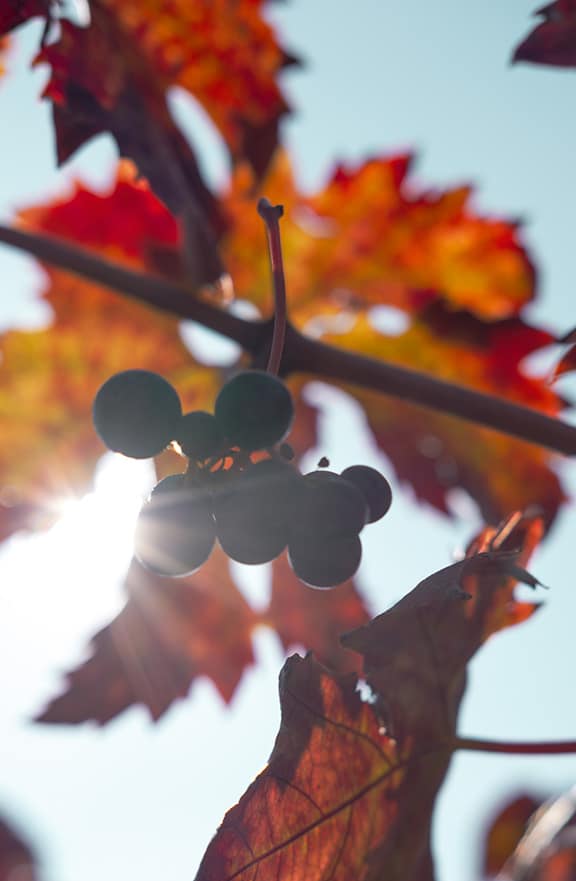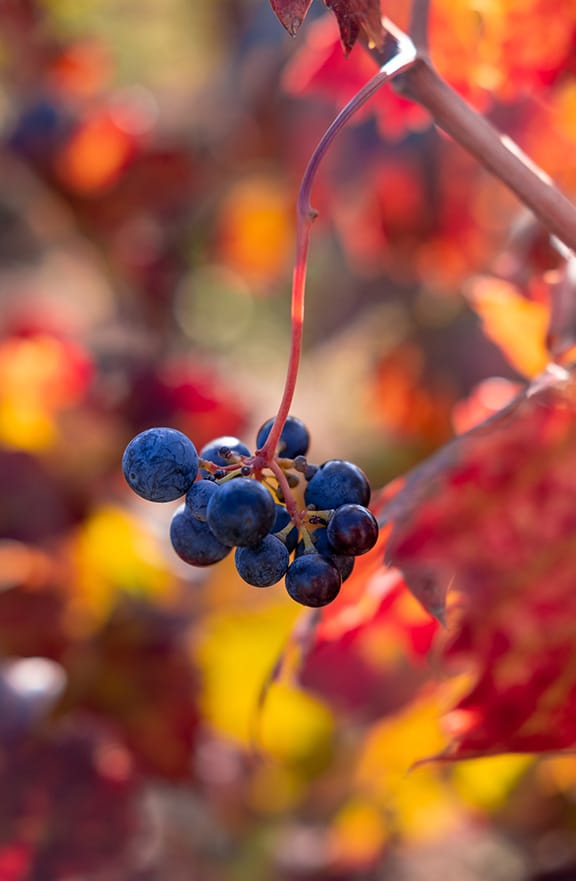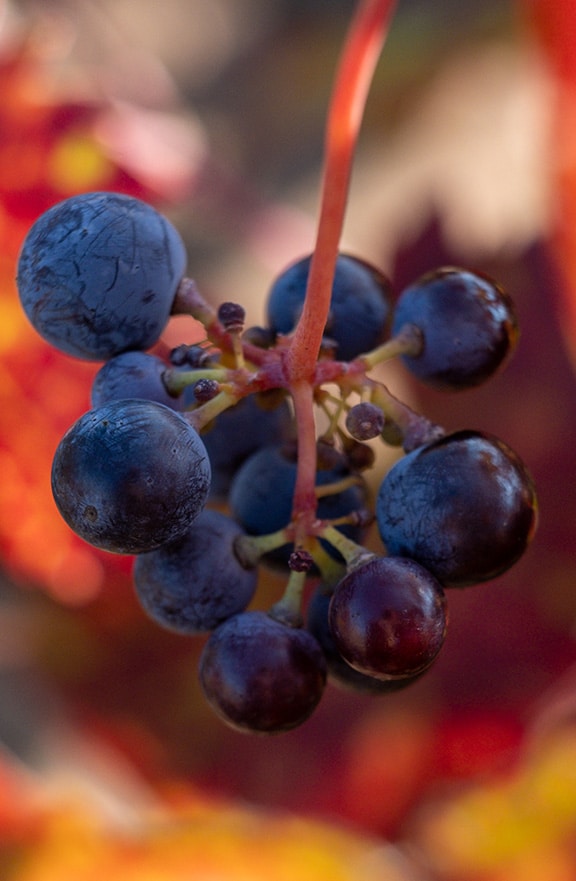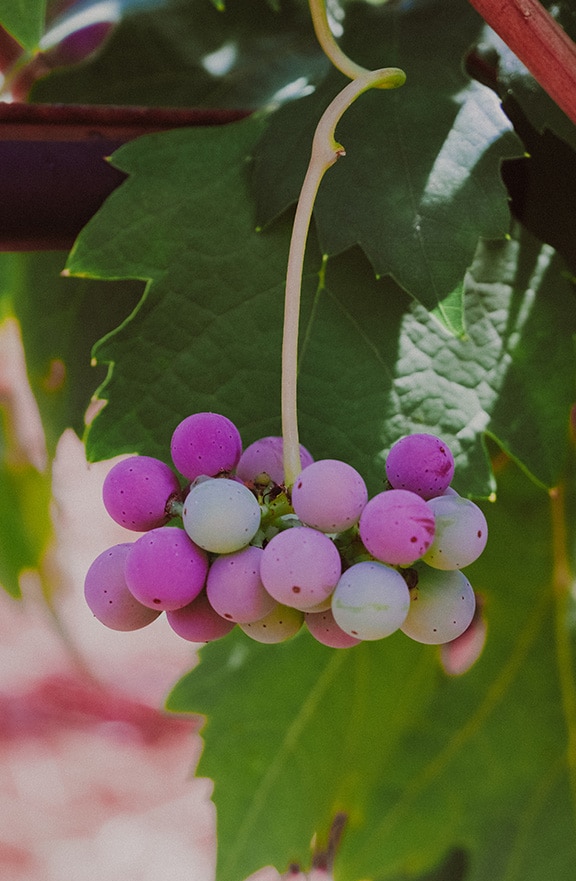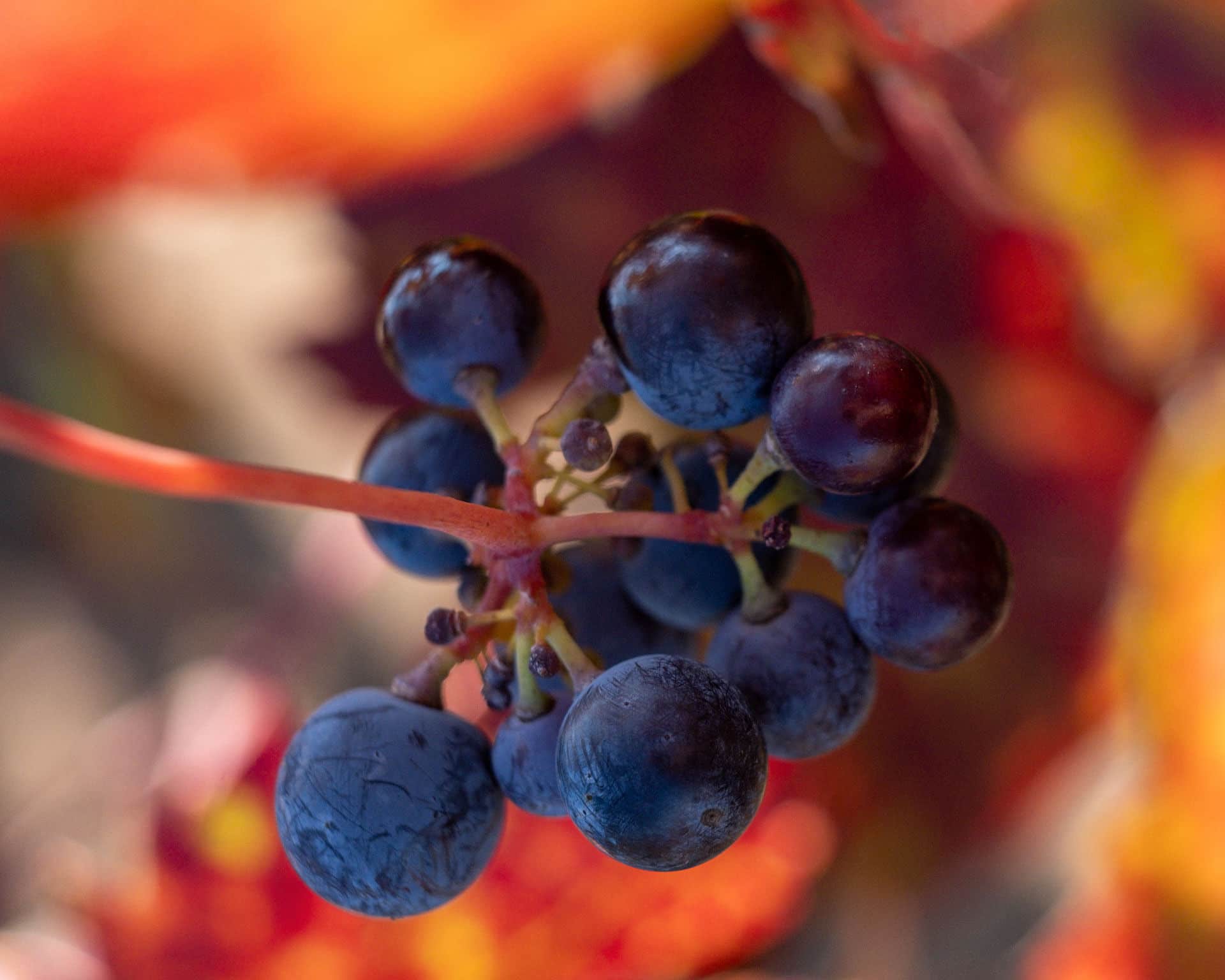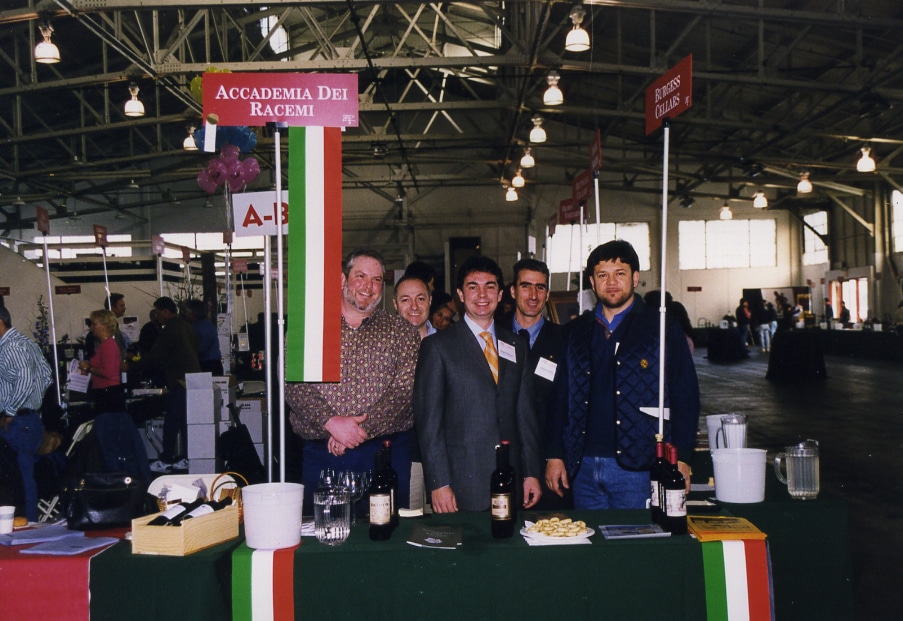Racemes were, in the past, an important “fruit” for the Primitivo di Manduria winemakers.
However, their scientific origin was completely unknown to them, so that they relied on a legend to give themselves an explanation.
Actually, it is fertility: basal buds are fruitful.
This second fruiting, which forms on the “femminelle” (the secondary branches of the plant), ripens about a month after the main grape bunches, thus requiring a “second harvest”.
And of course a second vinification!
These racemes are smaller, rounder and in some cases even more abundant than the main bunches harvested in early September, so that farmers used to call the Primitivo “signurinu”, meaning a small, finished and orderly noble.
This is because the plant regulates itself producing a balanced quantity of main bunches first and racemes after.
There was great respect for the racemes and great consideration for their vinification, which was in any case easier: their early October ripening yielded fruits with lower sugar content and a more marked acidity.
The result was a more elegant wine, excellent to cut the very full-bodied one produced with the main bunches, giving delicacy to the final product.
Indeed, the versatility of these late bunches was fully exploited, above all, by the several families who vinified on their own in the millstones or in their houses basements, storing everything in the famous “capasoni”. The racemes, in fact, constituted a real “second chance”. If something went wrong during the main bunches harvest (bad weather, unfertilized flowers or simply winemaking mistakes), hopes and expectations were placed on the second harvest.
For this reason some farmers vinified the racemes like the main bunches themselves, bringing them to a light or medium withering to obtain a higher alcohol content and body; others instead vinified them “alla fiorentina”, leaving the must on the skins for a very little time, obtaining a wine with a feeble color, “claret” style, generally the wine stocked for the summer months; there were also those who over ripened the racemes and then vinified them with the same technique, obtaining a sweet rosé, a gem for special occasions and family celebrations.
In any case, bunches and racemes of Primitivo, according to producers of all the towns around Manduria (Sava, Maruggio, Avetrana, Torricella) were considered two inseparable dimensions of the same plant. Their production was widespread and a meticulous care and attention was given to both. Since the establishment of the DOC, in 1974, the two harvests were rightfully considered suitable for the production of Primitivo di Manduria DOC.
Until when new consultants, “experts”, called by the Protection Consortium to express their opinion on the procedural guideline updating, convinced the presidents of the wine cooperatives (meaning unbeknown to the farmers) to repudiate these pretty bunches and, on the basis of a presumed qualitative inferiority, to oust them from the production of Primitivo di Manduria doc.
That was just 20 years ago.
Since then, the loneliness of the Primitivo racemes has begun.
Bureaucratically neglected and discriminated, but stubbornly still produced and vinified by many winemakers who know their true potential and use them as secret body double.

